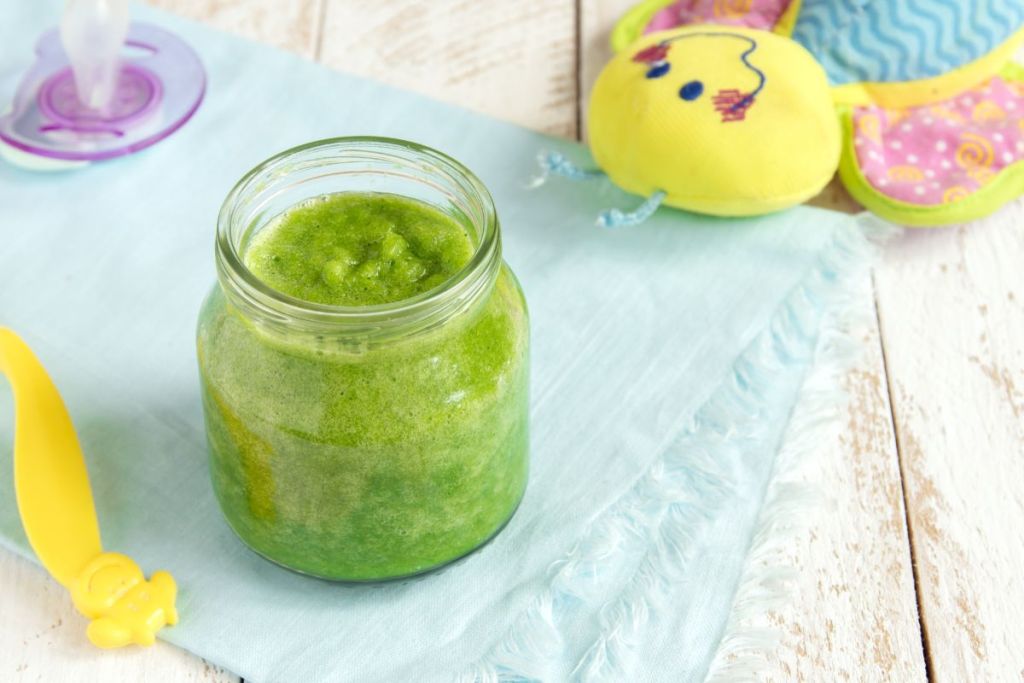Introducing your baby to solid foods is an exciting time. While some babies can’t wait to eat solid foods, others may struggle with the flavors and textures of all the new foods they will be trying. Babies grow like crazy once they start on solid foods, so you want to make sure you can get their meals ready quickly and efficiently.
There are so many things that you can try, from carrots and squash to beets and spinach. A spinach puree can hold a plethora of vitamins that are wonderful for helping to feed and nourish your baby. We’re sharing how to make spinach puree for your baby that won’t have you spending hours in the kitchen.
How to make a spinach puree for baby

Select your spinach
The first thing you’ll want to do when you are getting ready to make the spinach puree for your baby is to select the kind of spinach that you would like to use. You could choose from full-grown spinach leaves to baby spinach, or even frozen spinach. It is entirely up to you what you want to use. Some quick tips about choosing your spinach, make sure the leaves look green and crisp. Also, avoid any leaves that look dark or limp. Remove the stems from the spinach if you have bought fresh spinach.
Wash the spinach
It is very important to wash the spinach that you are about to use to make your baby’s spinach puree. However, when you have any extra spinach, it is important not to wash it before placing it into the refrigerator for freshness, as this can make the leaves deteriorate faster. Be sure to shake off any excess water from the spinach when you are finished washing it off. When it comes to frozen spinach, there’s no need to wash it off.
Steam (or boil) the leaves
Steaming
Now comes the fun part! If you are going to steam the leaves, put them into a steamer basket and be sure that you keep an eye on it. Let it steam for about three to five minutes. Make sure that the leaves look wilted and pretty tender for your little one. You may need more time or you may need less time, depending on your cooktop and how quickly it heats up. Once the spinach has steamed, run it under cold water to stop the cooking process of the spinach. Drain it, and you are ready to go.
Boiling
If you do not have a steamer basket, that is perfectly fine. Instead of steaming the spinach, you can just as easily blanch the spinach by putting it into a pot of hot boiling water for around a minute or so. Stop the cooking process by placing the leaves into a bowl of ice water, which is what stops the cooking process on the spinach when you are using boiling water.
Pureeing the spinach
A great way to puree your spinach is to have a blender or a food processor ready at your disposal when you are ready. You will want to take your cooked and wilted spinach leaves and transfer them straight into the blender or food processor. Then it’s time to blend the spinach until it is smooth. You can even easily add a bit of water or even some breastmilk to give it the consistency that you desire.
Feeding your baby

You can now introduce your finished spinach puree to your baby. Once your baby becomes accustomed to the taste, you might want to start to mix other purees in with your spinach puree. Plenty of other vegetables go quite well with spinach, like carrots, apples, parsnips, and more.
The excess spinach puree will stay fresh for approximately three to five days when it is sealed within an airtight container. Another idea for the spinach puree is to freeze it in ice cube trays, where you can easily grab and defrost one in one easy swoop just in time for lunch or dinner. After being frozen, save the spinach cubes from the tray by tossing them into a freezer bag and sealing them. The cubes will stay good for up to two months.
Other great foods to puree

If you’re looking for other great vegetables to puree for your baby, there are many other tasty choices. Starting around 5 or 6 months your baby is ready to taste a variety of foods, so giving them options is a great idea. Vegetables and fruits such as sweet potato, apple, carrot, beet, and pear all make great purees for your little one. Peas, bananas, avocadoes, and mangoes are also great choices.
Try combining a few of these foods to give your baby an exciting flavor combination. This often helps if your baby is struggling with one of the vegetables you’ve tried to introduce. Sometimes blending a fruit with a vegetable can make it easier to introduce new foods.
Spinach is a great resource of folic acid, vitamin C, vitamin K, iron, calcium and so many minerals that will help your baby grow into a strong and healthy child. Spinach has also been found to help with eye health and help to reduce the risk of cancer. It truly is a delicious vegetable powerhouse that will help introduce your little one to green vegetables. Other nutritional vegetables that you can add to spinach purees are peas and other green vegetables. It’s a wonderful way to put your little one on the path to eating healthy solids and pave the way for their tastes down the road when they get older.



